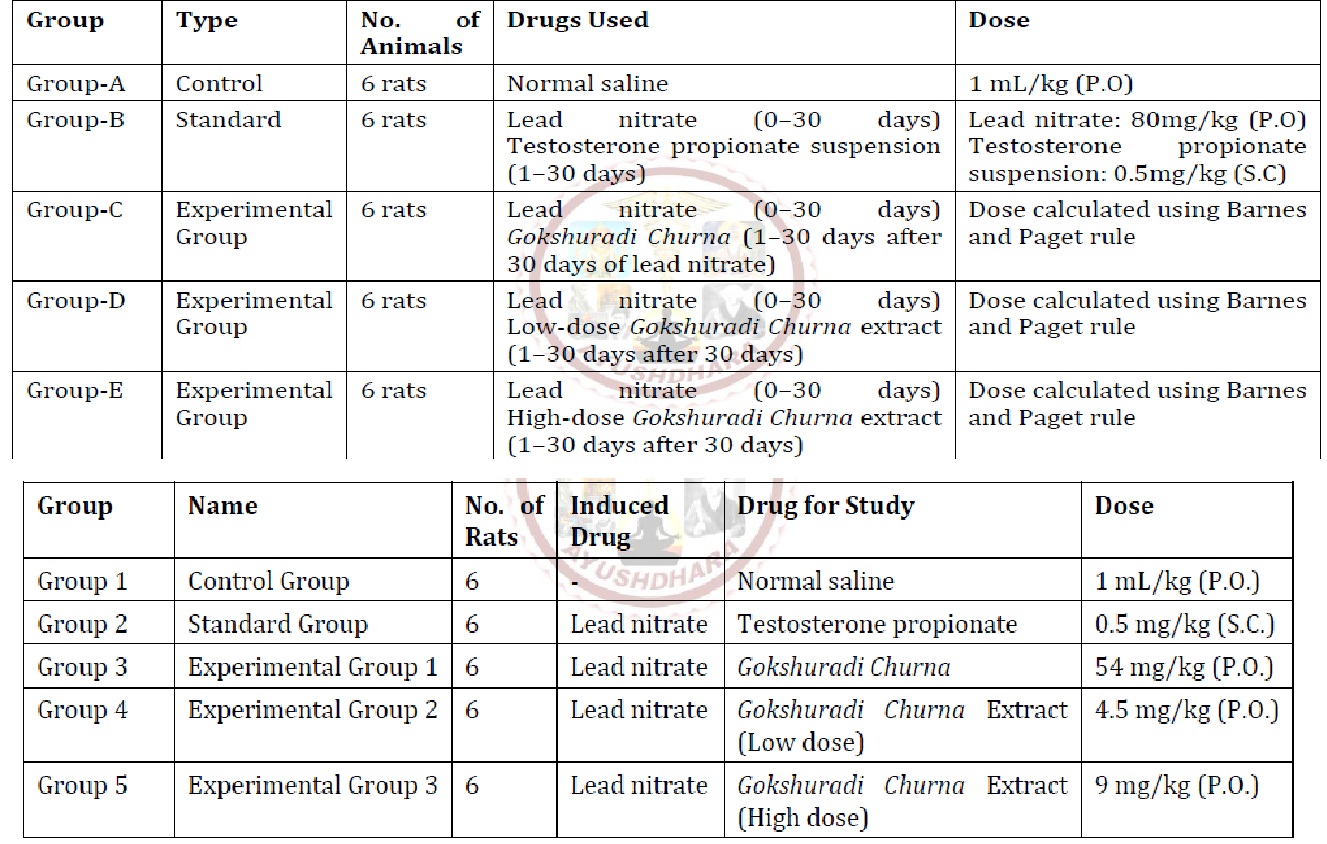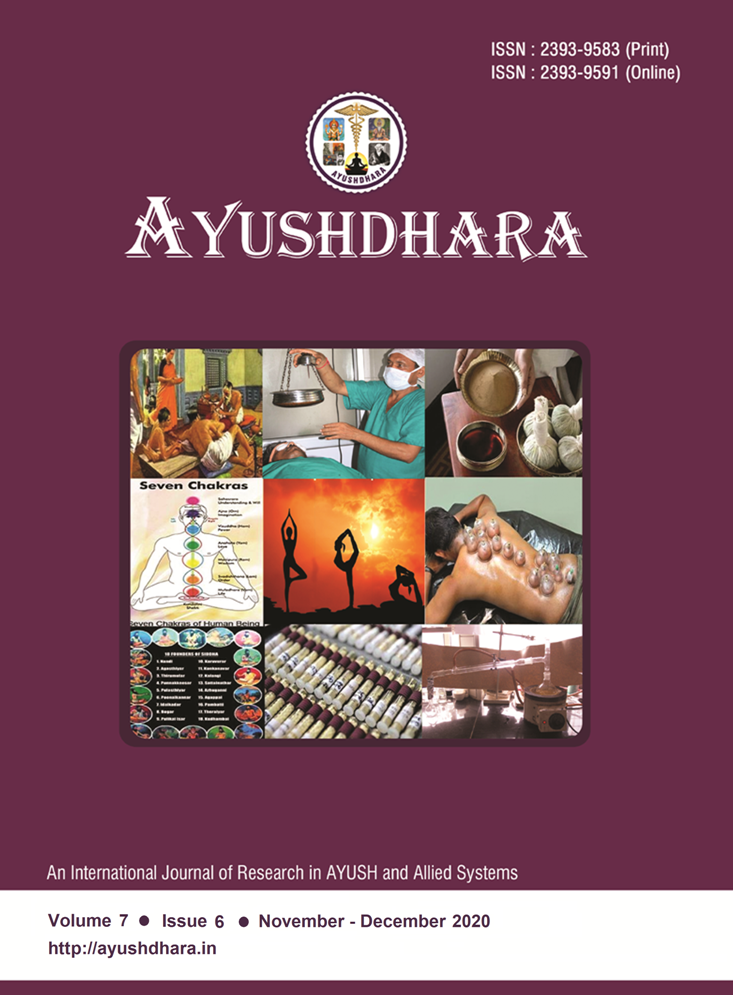Spermatogenic Efficacy of Ayurvedic Formulation Gokshuradi Churna and its Extract
DOI:
https://doi.org/10.47070/ayushdhara.v12i1.1967Keywords:
Gokshuradi Churna, Infertility, spermatogenesis activitiesAbstract
Infertility affects approximately 15% of couples globally, with male factors contributing to 20-70% of cases. The male reproductive system is highly sensitive to environmental, lifestyle, and various physical and chemical factors. Semen analysis identifies the cause in 40-50% of cases. While modern drugs are available, they may cause undesirable side effects. Vajikarana, one of the eight branches of Ayurveda, offers herbal and herbomineral formulations with aphrodisiac properties, such as Gokshuradi Churna. This polyherbal formulation includes Gokshura (Tribulus terrestris Linn.), Ikshura (Asteracantha longifolia Nees.), Mash (Phaseolus mungo Linn.), Atmagupta (Mucuna prurita Hook.), and Shatavari (Asparagus racemosus Wild.), as described in the classical text Ashtanga Hridaya. Aim: To evaluate the spermatogenic activity of Gokshuradi Churna and its extract. Objectives: Literary review, Pharmaceutical and analytical study, pharmacognostic study, In-vivo spermatogenic activity evaluation Materials and Methods: Gokshuradi Churna was prepared per classical methods, and various extract samples were formulated. Organoleptic parameters (taste, odor, appearance) and physicochemical parameters (loss on drying, total ash, water-soluble and alcohol-soluble extractives, pH, particle size) were analyzed. Tests included HPTLC, microbial limit, and heavy metal analysis. In-vivo spermatogenic activity was evaluated using Albino Wistar rats, analyzing sperm count, motility, non-motile sperm, body weight, and reproductive organ weight after 30 days. Results and Observations: Analytical results for all samples were within permissible limits. A statistically significant increase in sperm count (F=371.03, P=0.0001) and motility (F=11.13, P=0.0001) was observed across all groups. Sperm count improvement: Extract (low dose) < Gokshuradi Churna < Extract (high dose). Sperm motility improvement: Extract (low dose) < Extract (high dose) < Gokshuradi Churna. Non-motile sperm: Standard > Extract (low dose) > Extract (high dose) > Gokshuradi Churna. Conclusion: Both Gokshuradi Churna and its extract demonstrated significant spermatogenic activity, with varying efficacy depending on the dose and form.
Downloads

Published
How to Cite
Issue
Section
Copyright (c) 2025 AYUSHDHARA

This work is licensed under a Creative Commons Attribution-NonCommercial-ShareAlike 4.0 International License.



